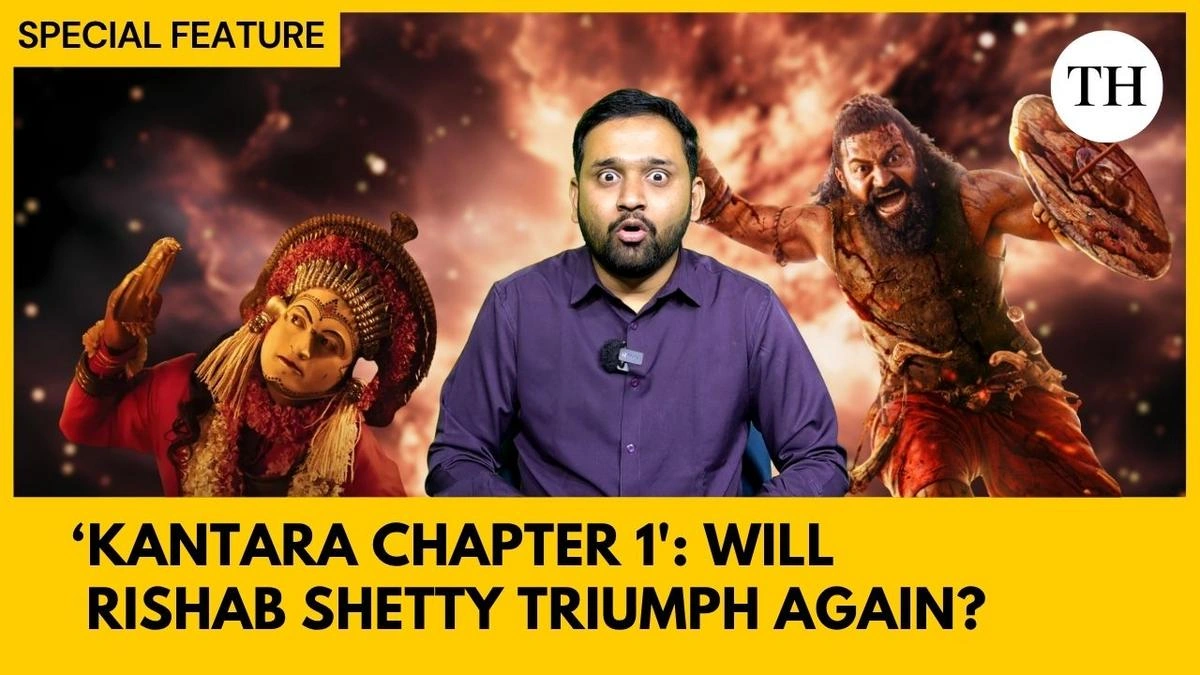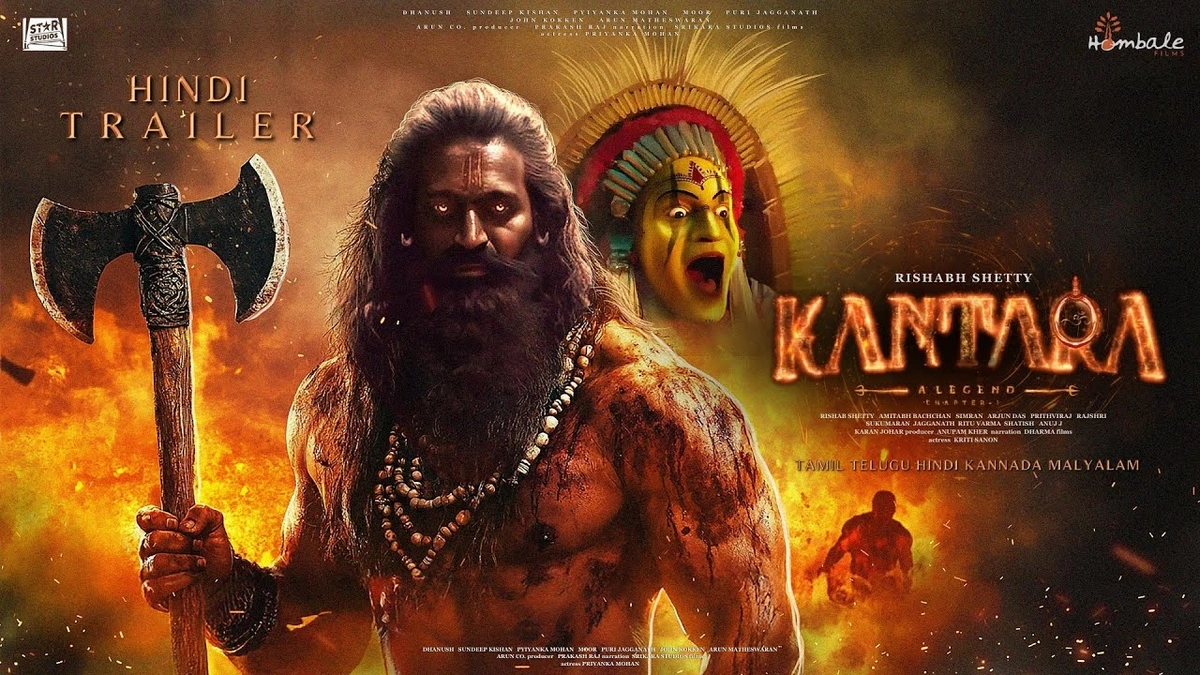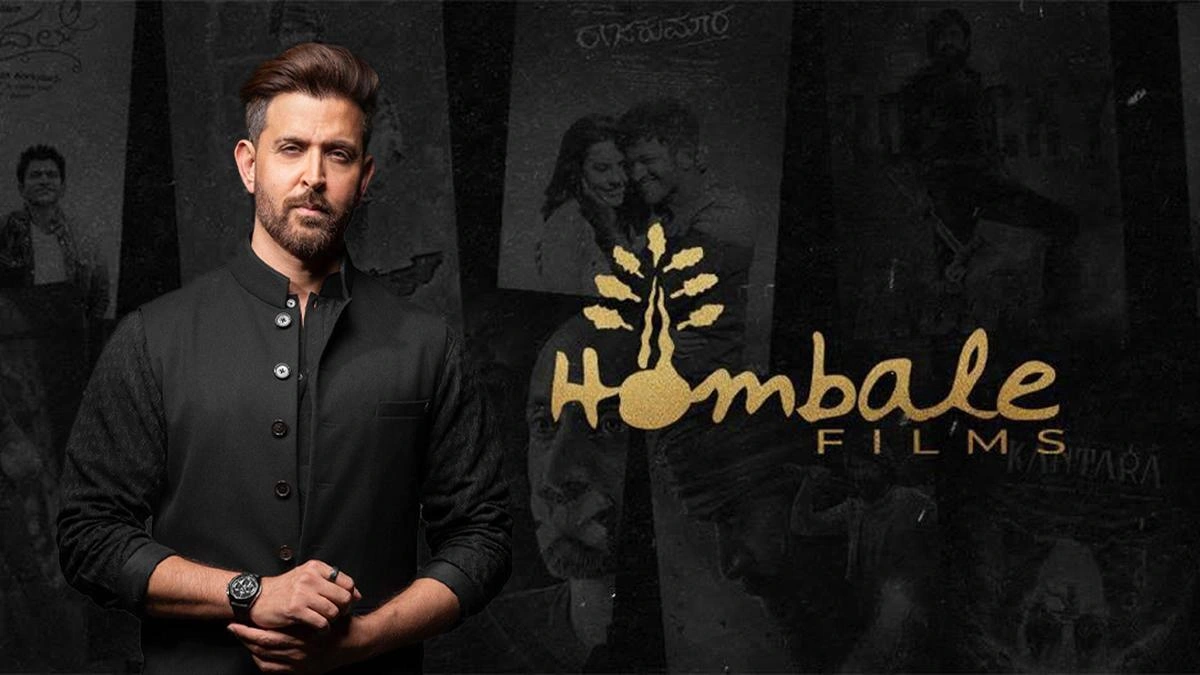Decoding Kantara Chapter 1 | Why Rishab Shetty’s Vision Matters
Okay, let’s be honest. When another period film hits the screens, a tiny part of you probably groans. Been there, seen that, right? But Kantara Chapter 1 ? This isn’t just another film; it’s a cultural earthquake waiting to happen. Rishab Shetty isn’t just telling a story; he’s inviting us to witness a world where folklore, faith, and nature collide with a raw intensity rarely seen on screen. The film’s release has sparked immense interest in Rishab Shetty’s vision and his ability to weave narratives that deeply resonate with audiences.
But why this film? What’s the magic that has everyone from your chaiwala to film critics buzzing? Let’s dive in.
The Heart of Kantara | A Look at Its Cultural Roots

Kantara isn’t some made-up fantasy world. It’s steeped in the traditions and beliefs of coastal Karnataka. The film beautifully captures the essence of Daiva worship , a deeply ingrained practice where spirits are believed to interact with the living world. These aren’t just stories for kids; they are living traditions that dictate the way people live, farm, and resolve conflicts. Understanding this context is crucial to appreciating the layers of meaning in Kantara. And believe me, there are layers.
What fascinates me is how Rishab Shetty has managed to translate these complex cultural nuances onto the big screen without losing their authenticity. He’s not just showcasing folklore; he’s making it relevant to a modern audience. It’s a delicate balance, and Shetty nails it.
Rishab Shetty | More Than Just an Actor
Rishab Shetty isn’t just in front of the camera; he is the driving force behind Kantara. He’s the writer, the director, and the lead actor. That’s a lot of hats to wear, but it’s also what gives the film its unique, unfiltered voice. According to various interviews, Shetty spent years researching the culture and traditions depicted in the film, ensuring that every detail rings true. This dedication is palpable in every frame, making Rishab Shetty’s directorial choices all the more impactful.
But, here’s the thing: it’s not just about knowing the culture; it’s about understanding it on a visceral level. The way he embodies the character of Shiva, the protagonist, is not just acting; it’s a complete immersion. You can feel the character’s struggles, his doubts, and his unwavering connection to his land. This is a character study that resonates across cultures.
Decoding the Symbolism | What Kantara Is Really About
Kantara is visually stunning, but its true power lies in its symbolism. The film explores themes of man vs. nature, tradition vs. modernity, and faith vs. reason. The conflict between the forest dwellers and the encroaching forces of civilization is a powerful metaphor for the challenges facing many indigenous communities in India today. One of the primary themes explored is the preservation of indigenous culture in the face of modernization.
And let’s not forget the Daiva. The divine spirit that permeates the film is not just a religious symbol; it represents the deep connection between the people and their land. It’s a reminder that we are all part of something larger than ourselves. The divine intervention in Kantara serves as a critical plot device, highlighting the power of faith.
The Impact of Kantara | Beyond the Box Office
Kantara’s success is not just about box office numbers; it’s about the cultural impact it’s having. The film has sparked a renewed interest in the traditions and beliefs of coastal Karnataka, inspiring people to learn more about their heritage. It’s also opened up a dialogue about the importance of preserving indigenous cultures and protecting our natural resources. The movie sparked conversations about the cultural significance of Bhoota Kola .
But here’s where it gets really interesting. The film has also faced criticism from some quarters, who argue that it romanticizes certain aspects of the culture. That’s a valid point, and it’s important to have these discussions. Art should provoke thought and challenge our assumptions. Kantara certainly does that.
What’s Next for Rishab Shetty and the Kantara Universe?
The success of Kantara has naturally led to speculation about a sequel or prequel. While Rishab Shetty has been tight-lipped about his future plans, it’s clear that he has a lot more to say about this world. According to Wikipedia , the potential for expanding the Kantara universe is immense, given the rich mythology and folklore that it draws upon.
Honestly, I’m excited to see what he comes up with next. Will he delve deeper into the origins of Daiva worship? Will he explore other regions of Karnataka with similar traditions? The possibilities are endless.
But, whatever he does, I hope he stays true to his vision. Kantara’s success is a testament to the power of authentic storytelling. It’s a reminder that we don’t need to look to Hollywood for inspiration; we have our own stories to tell, right here in India. And, if there’s one thing I hope people take away from Kantara, it’s this: our culture is not a museum piece; it’s a living, breathing thing that deserves to be celebrated and protected. Plus, people want to know about the Kantara film franchise’s future .
Speaking of authentic storytelling, have you heard about Karan Aujla ? He is another artist who has a great grasp of storytelling.
Let me rephrase that for clarity… Kantara is more than a film; it’s an experience. It’s a journey into the heart of India, where tradition and modernity collide in a spectacular fashion. It’s a film that will stay with you long after the credits roll.
FAQ
What is the main theme of Kantara?
The film explores themes of man vs. nature, tradition vs. modernity, and the importance of preserving indigenous cultures.
Who is Rishab Shetty?
Rishab Shetty is the writer, director, and lead actor of Kantara.
What is Daiva worship?
Daiva worship is a deeply ingrained practice in coastal Karnataka where spirits are believed to interact with the living world.
Where does Kantara film take place?
Kantara takes place in the coastal region of Karnataka, India.
What is the cultural significance of Bhoota Kola?
Bhoota Kola is a ritualistic dance form that is central to the plot and cultural context of Kantara, representing a connection to the divine.
Is Kantara based on a true story?
While not a direct adaptation, Kantara is inspired by the real-life traditions, beliefs, and folklore of coastal Karnataka.













